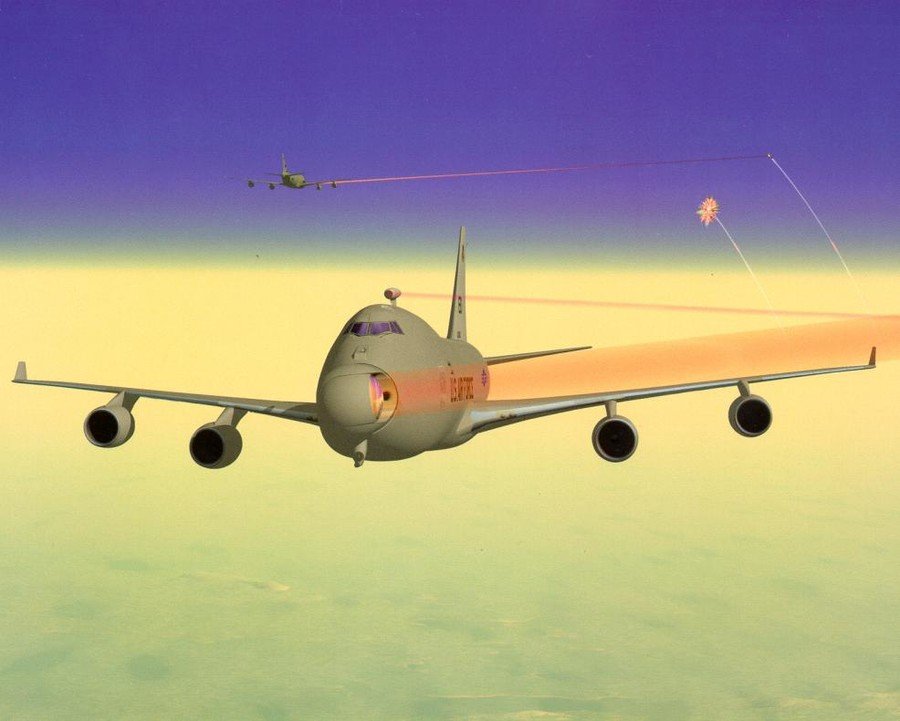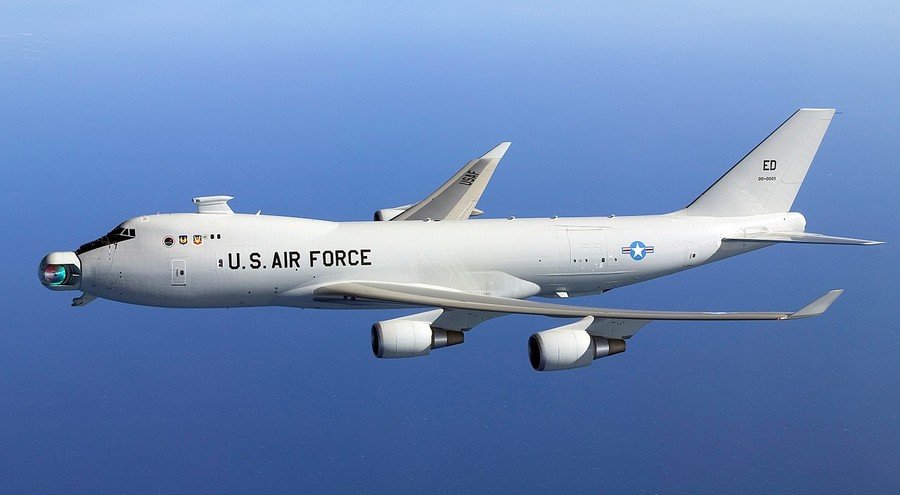Lasers & space weapons? How US might try to counter invincible Russian & Chinese hypersonic missiles

The testing of hypersonic weapons this year by Moscow and Beijing sent US military bigwigs into panic mode, as they found their missile defenses to be porous. RT looks at what –if anything– the US hopes can respond to those arms.
The American missile defense system, strategically placed all around the globe, has been the centerpiece of the “defensive” capabilities of Washington for years. The system relies on anti-aircraft missiles, supposed to shoot down incoming hostile projectiles. But the emergence of unconventional weaponry –namely the hypersonic missiles– has raised demand for new, equally unconventional defense systems.
Apart from hitting an incoming projectile with an intercepting one, the anti-missile research and development in the US revolved around two main ideas – using lasers and hitting hostile missiles with a kinetic device. The US military-industrial companies have been recycling the two concepts for years, fielding several prototypes that never entered full-scale production.
Getting them in space
The most destructive intercontinental and medium-range ballistic missiles reach high altitudes and travel in space for the large part of their flight. While sub-orbital, a missile releases its warheads –as well as decoys– and adjusts them to stay on target. That’s when the space-based kinetic weaponry is supposed to get them.
The kinetic interceptors played a major role in the notorious ‘Space Wars’ program of the Ronald Reagan era. Back then, they were supposed to impact and destroy enemy satellites. Later, similar devices were designed to target incoming ballistic missiles. Raytheon has successfully fielded its Exoatmospheric Kill Vehicle, capable of a kinetic hit on a single target in space, yet getting multiple warheads and decoys still remains a challenge.
In the 2000s, Lockheed Martin designed and tested a Multiple Kill Vehicle (MKV) concept. The device was supposed to get into space as the payload of a conventional rocket and then operate on its own. Each MKV was to pack multiple kinetic warheads, capable of intercepting and destroying multiple warheads on incoming ballistic missiles, as well as decoys.
While the MKV program was scrapped due to budget cuts and general doubts over its feasibility, it yielded, at least, a very cool video of hover tests.
It might look like a computer game, but this was a ballistic missile interceptor concept… developed and scrapped by Lockheed Martin. pic.twitter.com/6iM8pm1b92
— RT_Documentary (@RT_Doc) 28 ноября 2018 г.
In 2015, the idea was brought back to life, when Raytheon and other companies were contracted to design a Multi-Object Kill Vehicle (MOKV) concept. While little is known about the device, it appears to be quite similar to the MKV, being another space-faring machine, capable of releasing multiple kinetic interceptors.
This new concept is changing the role "kill vehicles" play in #missiledefense: https://t.co/dQI4g1mql3#MOKVpic.twitter.com/CqC9w1PEVf
— Raytheon (@Raytheon) December 5, 2015
Laser weapons in the air & on land
Scorching incoming projectiles with high-powered beams is a decades-old idea, which has been repeatedly tested by the US and other countries. American designers focused on two general concepts – land/sea and air-based laser emitters, which can whack missiles during their terminal approach and ascend stages respectively.

The most notable prototype of the US aircraft-based laser systems was Boeing YAL-1, first flown in the early 2000s. While similar to the Airborne Laser Laboratory tests, conducted in the 1980s, the new plane packed more punch.

But although YAL-1 has successfully hit airborne targets during tests, the project ran into financial and technological issues. The laser was too weak to actually hit missiles from any considerable distance, while heavier and more powerful equipment could not be lifted even by the Boeing 747. The project was eventually scrapped, since such a plane would have to operate right above enemy territory during a real conflict – which, naturally, was not a very feasible idea.
In the mid-2010s, however, the idea of an airborne laser was dusted off once again. This time, the laser is getting fitted to some fancy drone, saving the weight on the crew and life-support systems. A prototype, cautiously described as a “low-power laser demonstrator” is expected to fly in the early 2020s.
The US military industrial complex has also produced prototypes of land- and sea-based anti-missile lasers. While the systems do not suffer from the limitations their airborne analogues face, their range is still dwarfed by conventional anti-air missiles.
Ready to go hypersonic?
With Russia –and China– actively developing and successfully testing hypersonic missile systems, the US faces a new challenge, as it lacks anything to fend off such weapons. The top US officials complained that, while the US decided not to weaponize hypersonic technology, its “enemies” chose to do so – meaning that now Washington had to respond.
Pentagon has already launched about a dozen programs seeking to develop defense against hypersonic weapons – and to field their own. One of the systems under development is dubbed ‘Glide Breaker’ – an obvious nod to the Russian Avangard hypersonic glider.
Also on rt.com Pentagon designing ‘Glide Breaker’ interceptor to hit enemy hypersonic missiles – mediaLittle, if anything, is known about the US systems to counter hypersonic weaponry, and it’s yet to be seen if the military-industrial complex comes up with something truly new and shiny – or reaps profits from the two decades-old concepts again.
Like this story? Share it with a friend!















